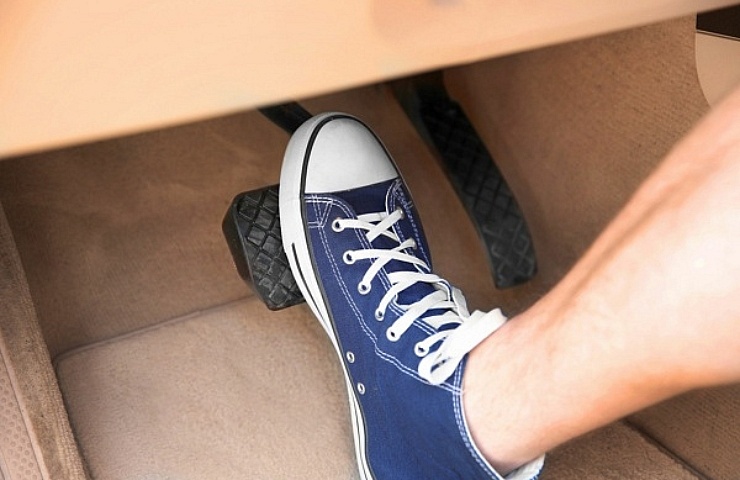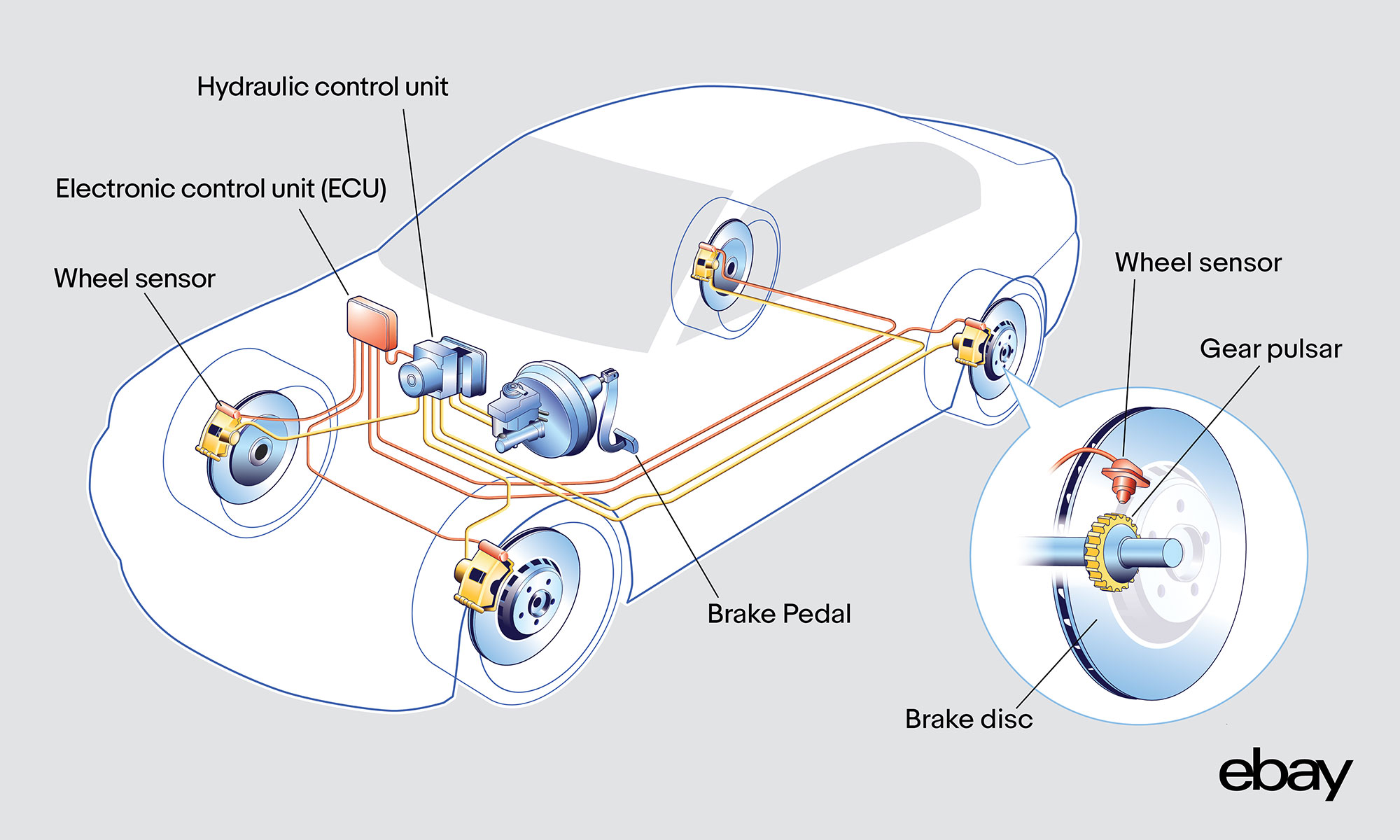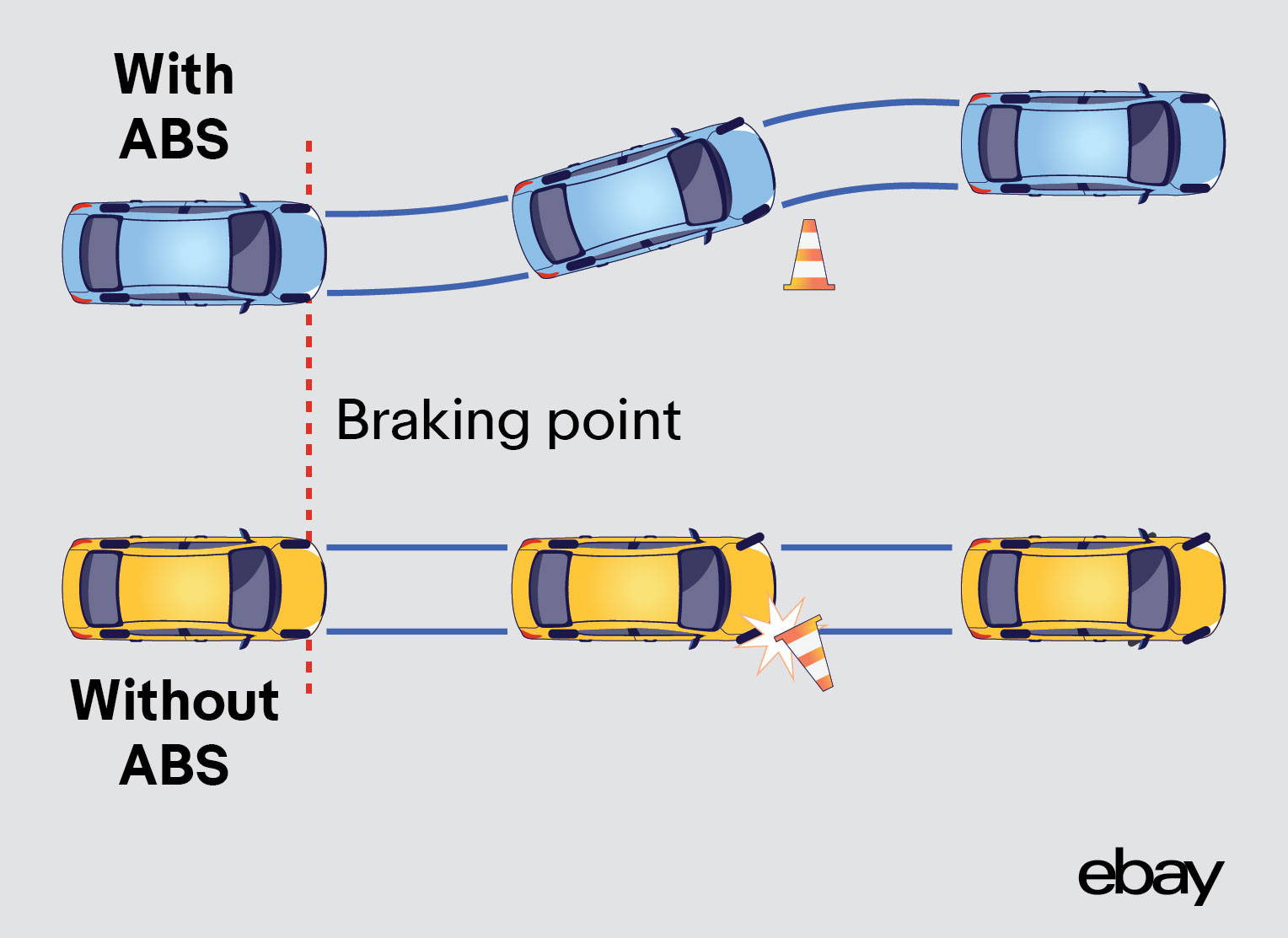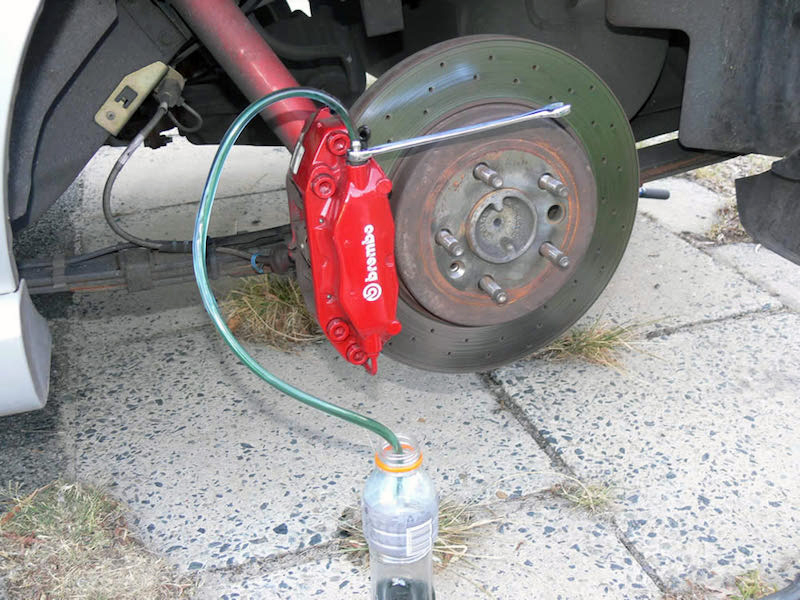Contents
Anti-lock braking systems (ABS) are an effective safety technology. The National Highway Traffic Safety Administration (NHTSA) reports that ABS for cars reduces the rate of fatal crashes with pedestrians by 13 percent. In addition, the Insurance Institute for Highway Safety (IIHS) heralds a 31 percent decrease in fatal motorcycle crashes when bikes are equipped with ABS.
Shop now for ABS control modulesWhat Are Anti-lock Brakes?
A vehicle equipped with ABS uses speed sensors installed at each wheel. The sensors’ primary function is to monitor wheel speed, detecting a potential wheel lock that could send the vehicle into a skid. If this scenario is imminent, the anti-lock braking system takes over the braking function and rapidly pumps the brakes to avoid wheel lockup, slowing the vehicle to a stop.

2007-2011 Honda CR-V rear ABS speed sensor
- A driver making a panic stop might feel slight pulsing or vibration at the brake pedal as the ABS takes over.
- Depending on the vehicle, a warning light in the gauge panel may illuminate or an alarm may sound to alert the driver that ABS is engaged.
The braking process in a vehicle equipped with anti-lock brakes is faster than it is in vehicles without it. Perhaps more importantly, by avoiding a skid, drivers can steer away from a collision. In addition, there is no need to pump the brakes manually.
The ABS process is initiated only during sudden braking, so drivers might never experience it. But it’s good to know that it’s available when needed.
Shop now for ABS speed sensorsSome light trucks only have ABS on the rear wheels, which means that the front wheels on these vehicles can still lock up, risking the loss of steering.
Brake Basics
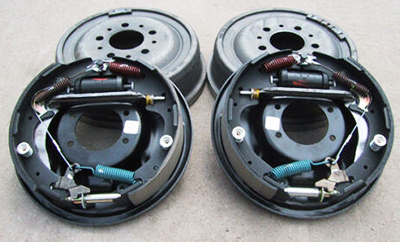
Drum brakes
Motor vehicles are equipped with either disc or drum brakes. In either case, when the brake pedal is pressed, a brake pad pushes against the brake drums or rotors to slow the wheel’s motion until it stops.
Nearly all braking events happen as expected. You slowly press the brake pedal and bring the car to a gentle stop. But let’s consider a so-called panic stop, which can be more dangerous in a vehicle without ABS. When a driver stomps hard or fully presses down on the brake pedal, the brake pads fully engage the wheels and stop them from rotating.
That’s a good thing. But it can also result in a skid when the car keeps moving forward, but the wheels no longer turn. This is called brake lock up. Your tires might even leave black skid marks on the roadway as they scrub across the pavement.
The old-school antidote in cars without ABS is to pump the brake pedal. That’s when a driver engages the brakes, and when the wheels start to lock up, they release the brakes slightly. Then, after about a half-second, the driver can press down again on the brakes, repeating the process until the car comes to a complete stop.
Shop now for brake pedalsUnfortunately, in real-world situations, a driver’s instinct is to slam the brake pedal and keep it firmly pressed—risking a lockup and potentially resulting in a crash that could have been avoided.
Types of ABS in Cars
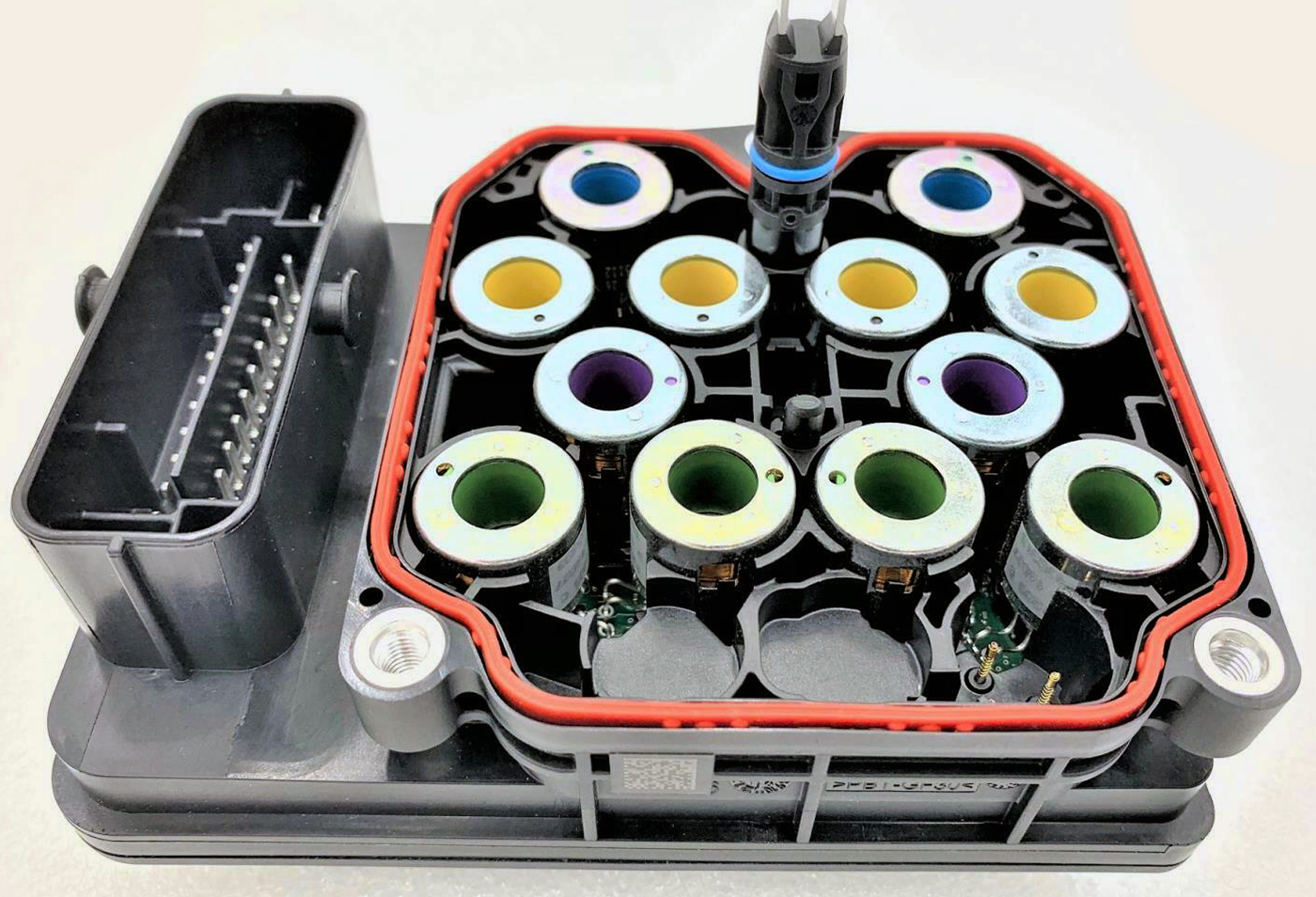
GM ABS control module for 2015-2016 Chevy trucks
There are five types of anti-lock braking systems in use today. Some are more effective than others.
- Four-channel, four-sensor ABS: Each wheel has a sensor and hydraulic valve to control the braking. Braking is individualized for all four wheels.
- Three-channel, four-sensor ABS: While sensors are still found on all four wheels, only one valve (channel) controls braking on the rear wheels.
- Three-channel, three-sensor ABS: This system is used in trucks, with the rear wheels sharing one sensor and one hydraulic valve. Instead of a sensor on the rear wheels, the ABS uses a magnet and a coil to generate an electrical signal from the rear axle. Both rear wheels have to be in danger of locking up before the rear ABS engages.
- Two-channel, four-sensor ABS: Vehicles made in the mid-1980s used this system. While four sensors are in place, the hydraulic valve applies simultaneously to both wheels (front or back).
- One-channel, one-sensor ABS: This system is used in pickups and SUVs, with one sensor monitoring both rear wheels. One valve activates the rear wheels.
ABS Offerings and Mandates
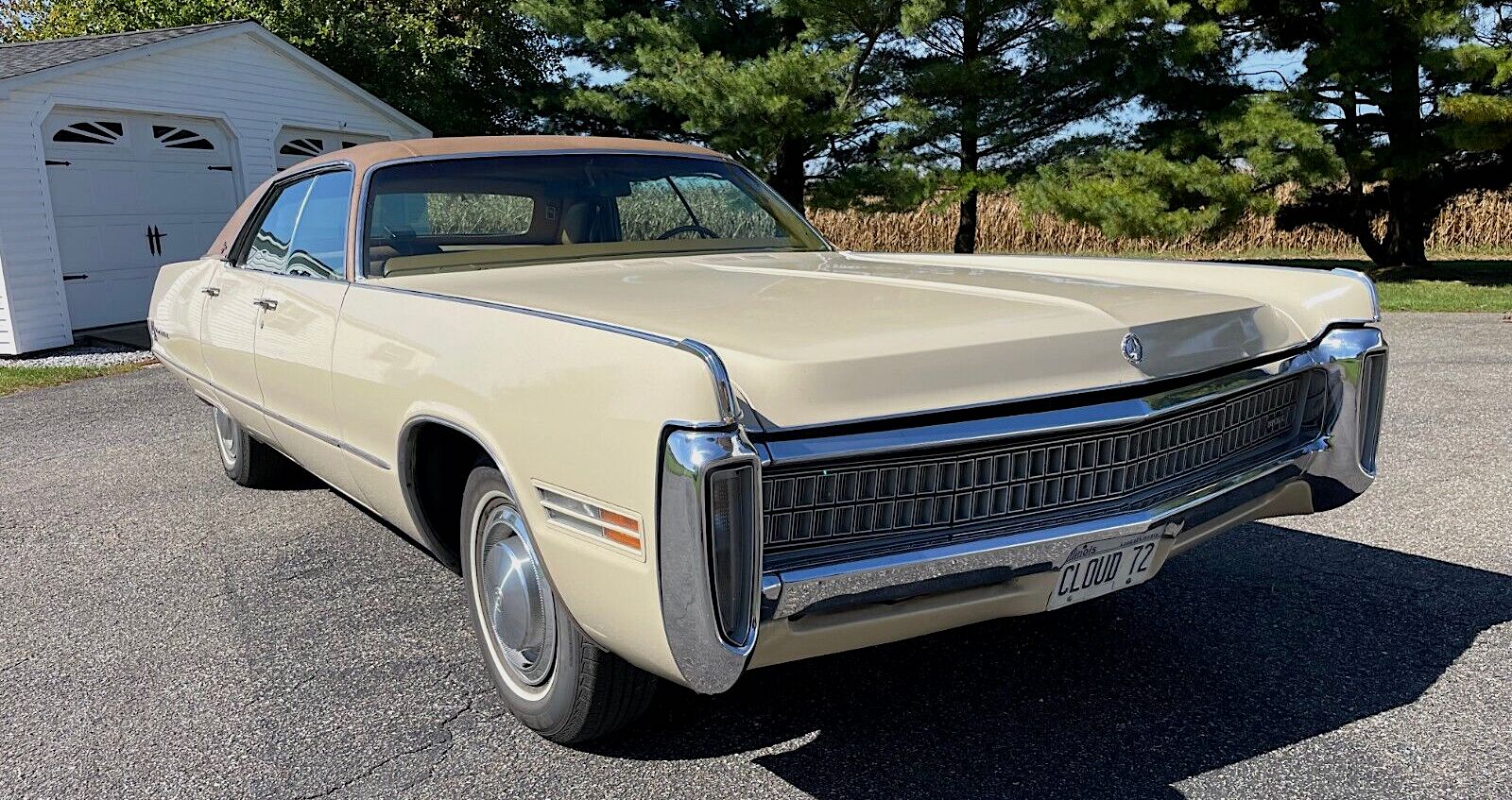
The mighty Chrysler Imperial was the first American car with ABS.
In 1971, Chrysler became the first carmaker to offer ABS for a passenger car. Other automakers followed soon afterward. By the mid-’80s, ABS was standard or optional on most vehicles. However, NHTSA required ABS in all vehicles starting in 2012.
You can check your owner’s manual or a dealership to confirm that your car has anti-lock brakes. Most vehicles with ABS have an indicator in the gauge cluster that flashes for a few seconds when the vehicle starts.
Shop now for gauge clustersMotorcycles can also benefit from ABS systems. Given the increased danger when one or both wheels on a motorcycle lock up, anti-lock braking systems are a great safety measure. The IIHS found that fatal motorcycle crashes dropped 22 percent in models with ABS compared to those without ABS. As a result, motorcycle manufacturers are offering more models with ABS standard or as an option.
ABS Car System Maintenance
If there is a system failure, the ABS symbol will illuminate in the gauge cluster. This means your car’s ABS isn’t working and should be repaired immediately. The problem could be with one of four components.
- Speed sensors are designed to monitor the wheel’s speed and can get dirty from road grime.
- Valves, used to regulate the car’s brakes, could fail when ABS is used. For example, a valve may become stuck in the open or closed position. If stuck open, hydraulic pressure flows freely to the ABS. If closed, the valve blocks the hydraulic pressure from regulating the brake pressure.
- Electronic control units (ECU) monitor the elements of the anti-lock braking system and control when the ABS process is activated. The ECU are complex systems with numerous electrical inputs. Heat, moisture, and even battery acid can cause issues with the ECU.
- Hydraulic control units increase or decrease the brake’s hydraulic pressure.
The best way to maintain the proper function of ABS in cars and avoid repairs is to replace your brake fluid regularly. Over time brake fluid will get contaminated. In addition, the fluid tends to absorb water from the environment. This makes it less effective and increases the risk of rust.
Replacing the fluid as recommended eliminates dirt, grime, and water, keeping the anti-lock braking system in top condition.
Here’s the bottom line: Modern automotive technology continues to improve vehicle safety. Anti-lock braking is a milestone in braking safety, maximizing stopping power and allowing drivers to emerge from otherwise dangerous situations without incident.
Shop now for brake fluid
